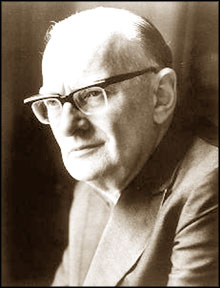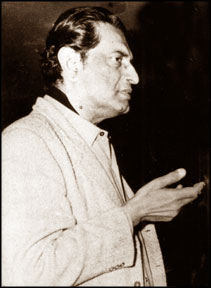Satyajit Ray’s ‘Whodunits’

 |
|
Dr. Arthur C. Clarke :propertic
wards |
Out of the multiplicity of expressions enshrined in the English
lexicon; I entertain a special feeling for one particular word!
“Serendipity”. You may very well ask why. I will explain. This is for a
very valid reason. Your faithful dictionary will tell you that the word
entered into the English Language through a Persian fairy tale”, The
Three Princes of Serendip”, way back in 1754. The trio of Princes in the
fairy tale possessed a phenomenal faculty.
They had the felicitous capacity to find valuable things, though they
would not deliberately seek them. If you continue to consult
dictionaries, you will make a serendipitous discovery of your own. It
was Horace Walpole the 4th Earl of Exford who coined the word, after the
Persian fairy tale. And, that is not all. Serendipity was an “alien
version” of an ancient name for Sri Lanka- Sinhala Dvipa. If you took
all this background profile seriously, wouldn’t you too cultivate an
affection for this expression-serendipity.
But, at this point you are quite likely to have a question ready for
me. “You promised in your headline, to talk about Great Satyajit Ray’s
“who dun-its”. But, here you are going at a tangent to “Serendipity”.
Yes, I knew I was straying. I will return to my avowed topic
instantly.
I have to reach Satyajit Ray’s ‘whodunits’ via serendipity - please.
The other day, I was visiting a friend at his office. There I chanced
upon (serendipity again) an old friend - Sirinimal Lakdusinghe. A
reputed archaeologist Sirinimal Lakdusinghe, is presently engaged in an
international study related to his discipline.
While talking about his sojourns in India a country he has to visit
quite often for professional purposes - he revealed how he came upon a
series of sci-fi whodunits, authored by Satyajit Ray. (Isn’t this
serendipity? may I ask.)
I felt seriously challenged by his revelation. I have written and
spoken extensively about the cinema colossus Satyajit Ray. How did I
miss his detective stories? Besides, my friend was talking about science
- fiction detectives - a genre I esteem. While I was preoccupied this
way, my friend went on to pile up some more serendipitous nuggets. He
had brought home an anthology of Satyajit Ray’s sci-fi whodunits. Mrs.
Lakdusinghe had translated a selection of those into Sinhala. Sirinimal
Lakdusinghe said that, Mrs. Chandralatha Lakdusinghe’s Sinhala version
was now available in print. He capped our conversation with the greatest
serendipity of them all. He said that he will present me a copy of that
book.
The Sinhala title of the translation is “Mahacarya Shonkuge Vikrama”.
The cover of the book gives the English version of the title as
“Satyajit Ray Bravo! Professor Shonku.”
Satyajit Ray, globally recognised for this creative film-making,
acquired an efficiency in story-telling, early on. Ardent Satyajit Ray
aficionado Director Amaranath Jayatilake tells me that Satyajit Ray’s
ability to narrate stories, was a paternal legacy. His paternal
grandfather Upendra Kishore and his father Sukumar were both
story-writers. Reading their works and translating some of them into
English, would have generated within young Satyajit Ray a deep yearning
to narrate many-lined stories.
He may have sauntered into the field of Detective Fiction, inspired
perhaps by the Sherlock Holmes series.
The translator Mrs. Chandralatha Lakdusinghe, states in her
introductory note on Satyajit Ray, that he was a competent detective
story writer and that, in the initial phase his detective was Feluda.
His first piece of detective fiction, titled “The Detective” appeared in
“Sandesh” magazine in 1966. His serialized detective story “The
Emperor’s Ring” appeared in the same magazine from 1967 to 1968. He may
have added the science-fiction element a little later, when the
fan-following for that genre began to burgeon, worldwide.
In his science-fiction detective stories, the sleuth is Prof. Shonku.
His predecessor, detective Feluda, may have yielded ground to the more
sophisticated new comer.
Mrs. Chandralatha Lakdusinghe, presents to the Sinhala reader, three
of Prof. Shonku’s science-fiction detective adventures.
The stories are narrated in the first-person singular view- point of
detective Prof. Shonku. The narrations are formatted in the style of
entries in diary pages.
The initial story in this Anthology, “The strange head-gear”, has as
its focal point, a strange machine he has invented in the shape of a
head-gear. It is the outcome of a strenuous inventive effort of
three-and-a-half years.
Its efficacy is the enhancing of one’s memory, and the quickening of
the pace of recall. The opening episode of the story is stunningly
dramatic. A detail his man-servant has forgotten comes back vividly,
when he wears the strange head-gear.
The intricate tracery of wires, inside the head-gear, functions like
the fine web of minuscule nerves, in the human brain. When the head-gear
is switched-on, memory sharpens, enabling the wearer to recall even the
minutest detail of an incident.
 |
|
Satyajit Ray: Creative
writer |
The detective utilises his machine to unearth a plot to steal a
secret formula.
The application of the strange head-gear to uncover the plot, forms
the body of the story. The adventure of Satyajit Ray’s fictitious sleuth
- Trilokshvara Shonku, is absorbing material. The narration has a
compelling power to keep the reader bound to what is being said.
Strangely enough, this story brought to my mind, one specific item,
in a series of prophecies made by Dr. Arthur C. Clarke, at the turn of
this century. (Incidentally, Dr. Arthur C. Clarke would not characterise
these as ‘prophecies’. He opted for the expression ‘extrapolation’). He
said that in the 21st century, men will invent a mechanism or a device,
that he termed as the Brain Cap. When you put it on, you can be fully
aware, if a person is telling you the truth. But, according to him, one
has to have one’s head shaven to be able to wear this “lie-detector”
(head-gear of Dr. Arthur C. Clarke’s) imagination.
In Satyajit Ray’s sci-fi detective story, the strange head-gear can
be worn, with one’s hair intact.
In the second story in the anthology, detective Prof. Shonku, has
evolved a system that enables him to break away from the gravitational
pull of the earth, at will, and to fly through the air in a fuel-less
craft. He names this as “Shonku Craft”.
While he was busy refining his invention, he had a recurrent dream
for several nights. What he dreamt was a kind of Island, that has never
existed on earth. His dreams acquainted him, with all the details of
this other-wordly Island. He decides to discover this ultra-exotic
place, unmarked in any map and to explore its mysteries comprehensively.
He persuades his friend and neighbour Abinash to be his companion in his
voyage of discovery. The main thrust of this story, is the mind-boggling
Island, they land on. His florid imagination has helped Satyajit Ray
immensely to populate this Island with exotic fauna and flora, that do
not exist in reality, any where on earth.
The last of the three stories, is the chronicle of an experiment
conducted to trace the evolution of life on earth.
The experiment succeeds and the stages through which life evolved on
earth, is retraced within a very brief period of time.
What intrigues the reader is the form of life that comes into being,
when human evolution reaches its utmost limit. At the apex of man’s
evolution, according this story, a being appears with a head occupying
half its body. He wears a halo, that looks like a plate of gold, on his
head.
His arms end abruptly at the elbow, and he has no fingers.
The story demonstrates that the strange being is a source of strange
power.
He vanquishes Prof. Shonku’s rival scientist, with a potent ray,
felling the demented rival.
To me the three stories seemed extremely tantalising. I put down the
volume, totally determined to seek out more of Great Ray’s sci-fi
who-dun-it.
Wish you all fascinating, serendipitous encounters, wherever you
roam.
|

